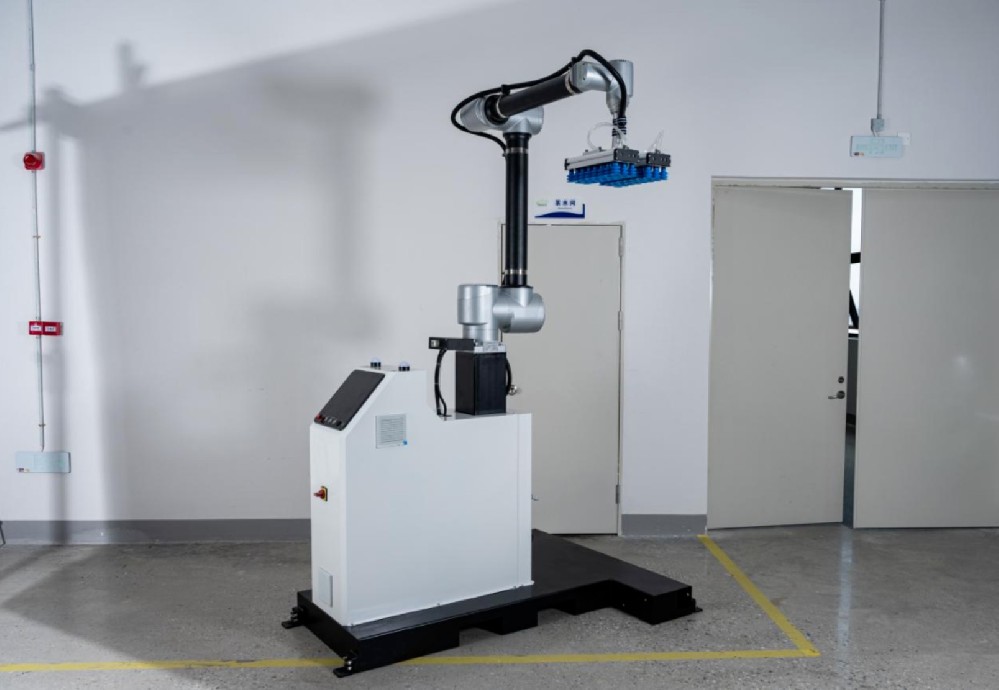In today's era of rapid technological advancement, the logistics industry, as a crucial link between production and consumption, is facing an urgent need for intelligent upgrading. Palletizing operations, as a critical step in the logistics process, directly affect the efficiency and accuracy of the entire logistics system. Traditional manual palletizing methods are not only labor-intensive and inefficient but also prone to errors, making it difficult to meet the demands of the rapidly developing modern logistics industry. Therefore, the development of palletizing robots has emerged as a necessity, and they have become a key force in driving the logistics industry towards intelligent and automated transformation. The development of palletizing robots has not been smooth sailing; it has faced numerous technical hurdles. Overcoming these obstacles is of paramount importance for initiating new transformations in intelligent logistics.

The primary technical challenge in the development of palletizing robots lies in precise positioning and grasping technologies. In complex logistics environments where goods vary in shape, size, and weight, palletizing robots need to accurately identify the position and orientation of the items and grasp them with appropriate force. This requires robots to be equipped with high-precision visual recognition systems and advanced force feedback control technologies. Currently, although significant progress has been made in visual recognition technology, the accuracy of recognition still needs to be improved in complex situations such as varying lighting conditions and objects obstructing the view. Force feedback control technology also needs further optimization to ensure that robots can maintain precise control of force when grasping different items, thereby avoiding damage to the goods. Motion planning and path optimization are also major challenges in the development of palletizing robots. Palletizing tasks often require robots to move quickly and efficiently within limited spaces. Planning the optimal motion path to reduce the robot's movement time and energy consumption is key to improving palletizing efficiency. During their movement, robots also need to avoid collisions with the surrounding environment, which places high demands on the real-time performance and reliability of motion planning algorithms. Existing motion planning algorithms often face issues such as high computational complexity and long planning times when dealing with complex scenarios, making it difficult to meet the requirements of practical applications. The stability and reliability of robots are also technical bottlenecks that cannot be ignored. During long periods of continuous operation, stacker robots must maintain a high level of stability to ensure the quality of the goods being stacked. Due to wear and tear on mechanical structures, malfunctions in electrical systems, and other reasons, robots may experience issues such as motion deviations and gripping errors, which can affect the efficiency and quality of their operations. Therefore, improving the stability and reliability of robots and extending their service life are important issues that need to be addressed in the development of palletizing robots. In order to overcome these technological bottlenecks, researchers and companies are continuously increasing their investment in research and development, and engaging in technological innovation. In terms of precise positioning and grasping techniques, researchers have improved the perception capabilities and recognition accuracy of robots by integrating information from various sensors, such as visual sensors, lidar, force sensors, etc. By utilizing artificial intelligence technologies such as deep learning, a large amount of images and data are trained to continuously optimize visual recognition algorithms, enabling them to adapt to more complex environments. In the areas of motion planning and path optimization, researchers have proposed a series of new algorithms and strategies, such as path planning methods based on intelligent optimization algorithms like genetic algorithms and ant colony algorithms, which are capable of quickly finding optimal paths in complex environments. Real-time monitoring and feedback mechanisms are also introduced to adjust the robot's motion state in real-time, thereby enhancing the timeliness and reliability of motion planning. In order to improve the stability and reliability of robots, companies have strengthened the design and optimization of the robotic mechanical structures and electrical systems. They use high-quality components and advanced manufacturing processes to enhance the overall performance of the robots. Establish a comprehensive fault diagnosis and prediction system to promptly identify and resolve issues that arise during the operation of robots, ensuring their stable performance. The development of palletizing robots is of great significance for advancing the progress of intelligent logistics. By overcoming technical barriers such as precise positioning and grasping, motion planning and path optimization, as well as stability and reliability, stacker robots will be able to achieve higher operational efficiency, more precise operations, and more stable performance. This will not only greatly enhance the level of intelligence in the logistics industry, reduce labor costs, and improve logistics efficiency, but it will also provide strong support for the development of related industries such as manufacturing and e-commerce. In the future, with continuous technological advancements and innovations, palletizing robots are expected to play an even more important role in the field of intelligent logistics, triggering new transformations in this sector.